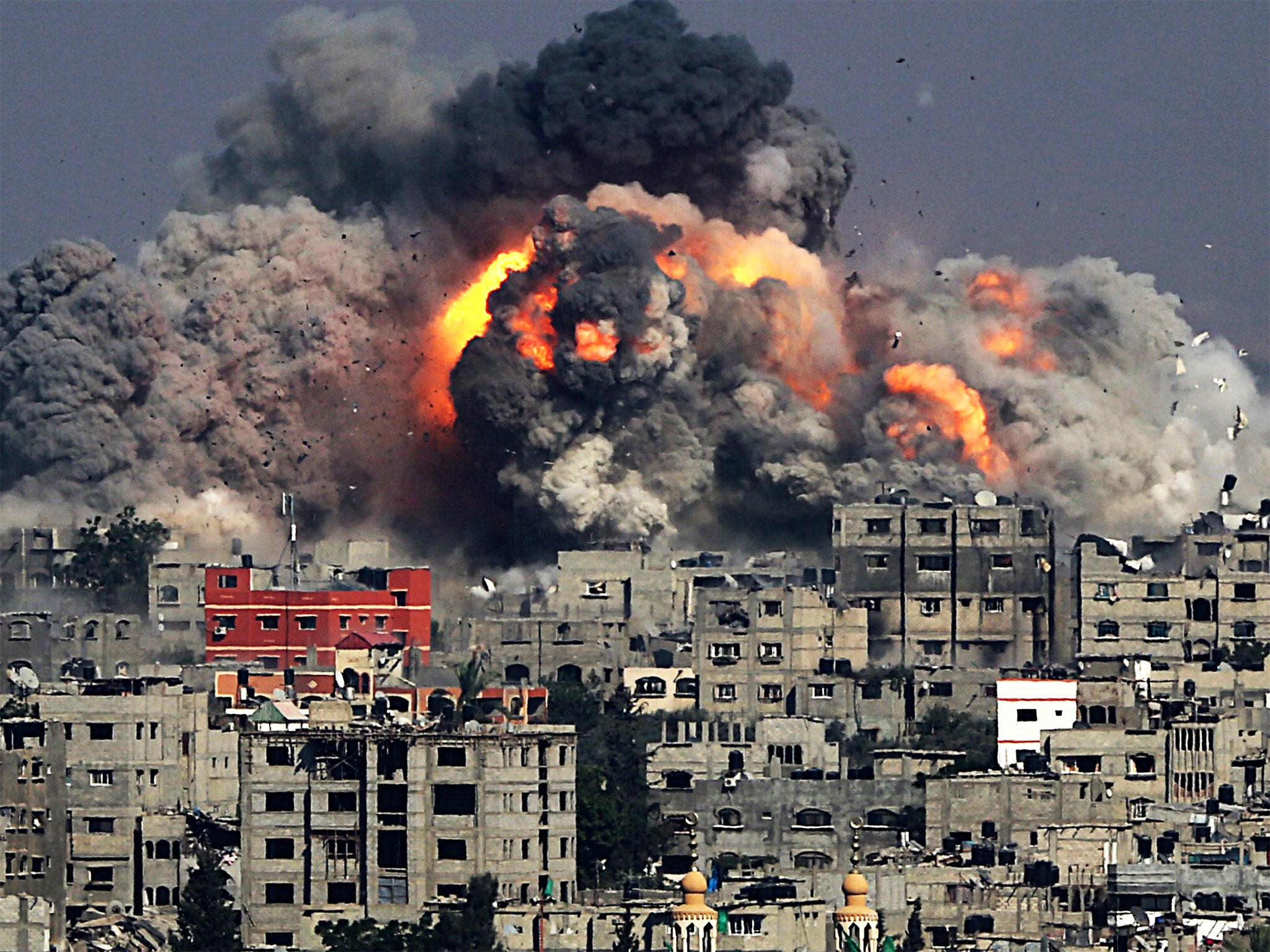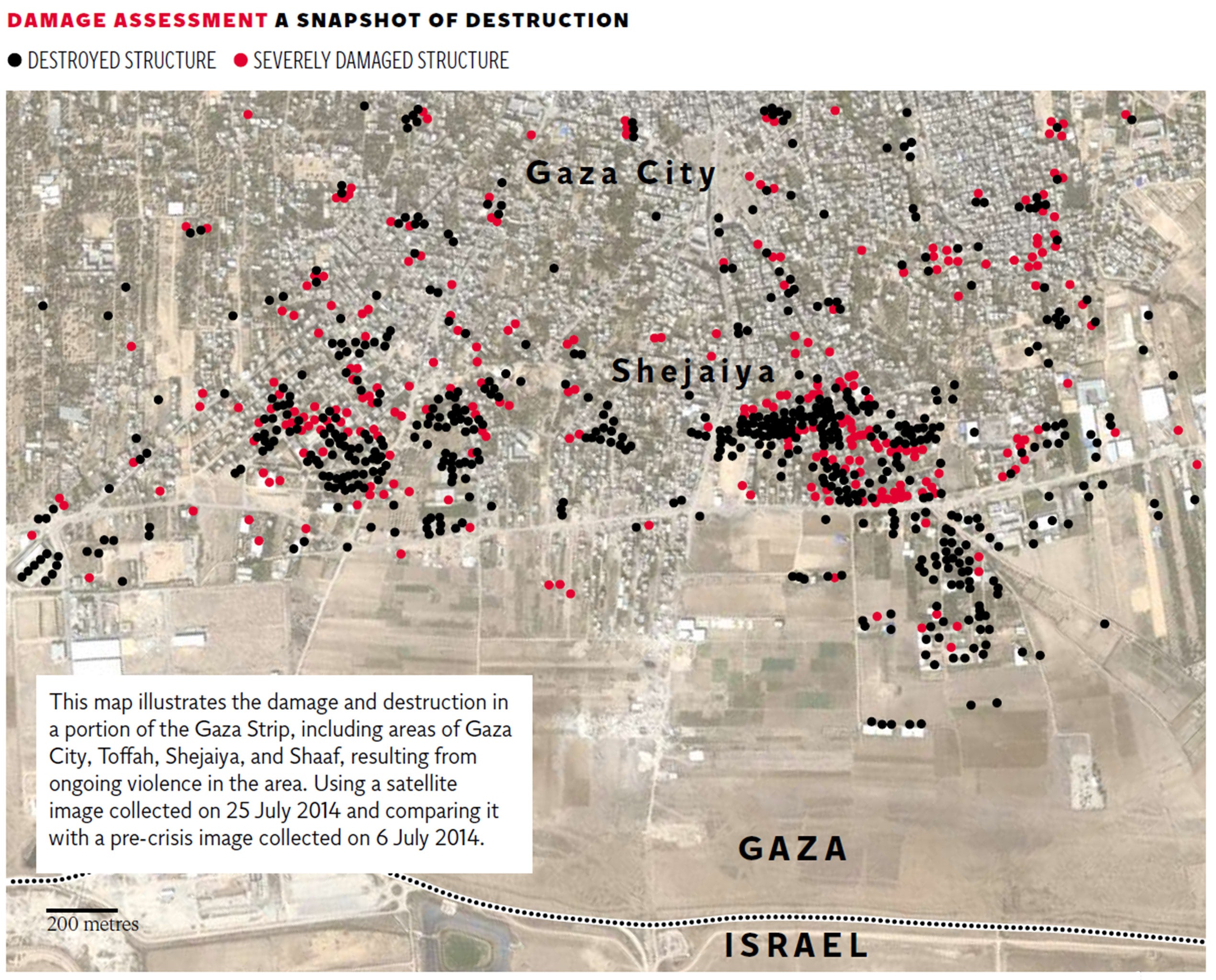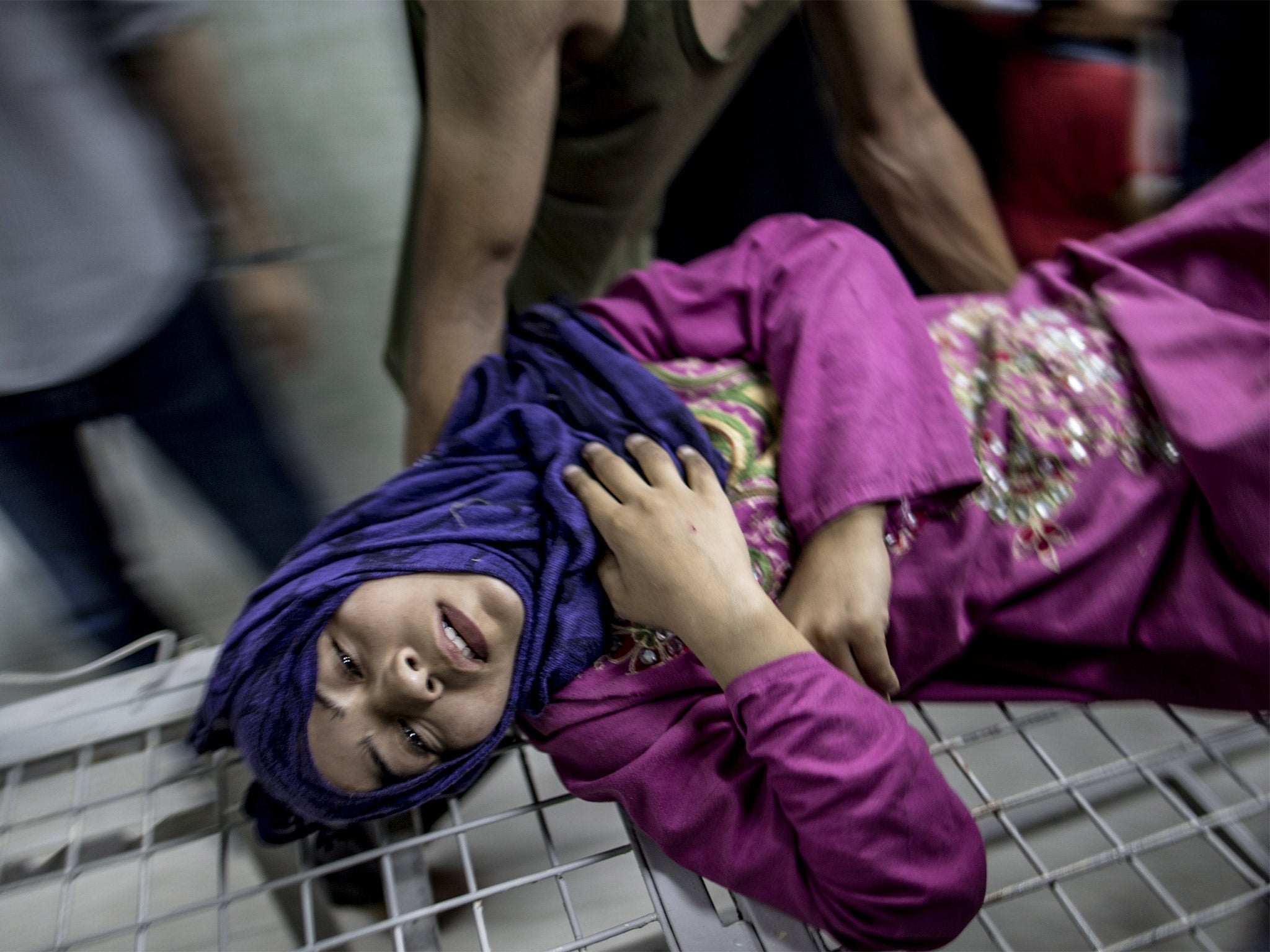Israel-Gaza conflict: At least 100 Palestinians killed and only power station shut down in heaviest day of bombardment yet
Collapsing infrastructure makes normal life impossible. Hopes of a ceasefire prove short-lived. Both sides promise further death and destruction. And the worst thing is a ghastly sense of familiarity...

Much of what little is left of the shattered infrastructure of Gaza was pulverised by the Israeli military in a night of ferocious and relentless attacks by air, sea and land.
There was also symbolic punitive destruction of the homes of Hamas officials, including that of the movement’s leader, Ismail Haniyeh. The attacks piled up more misery for the battered population. What little electricity there was has disappeared after tank shells set the only power station alight.
Senior officials stayed away from Shifa, the main hospital, after an adjoining clinic was hit by a missile strike, causing serious problems.
But the explosions taking place carried echoes of the past – fateful, violent repetition of the conflicts Israel had engaged in in Gaza every few years. A futile cycle of rockets and retribution, tearing down and rebuilding, doomed to repeat itself.
Tonight, there were renewed rumours of a ceasefire, but the rumours proved false. The attack on the power station came as part of the Israeli ground offensive, Operation Protective Edge, which followed the kidnap and murder of three Jewish teenagers by Palestinian extremists. The key objective, the Israeli Prime Minister, Benjamin Netanyahu, has declared, is destroying tunnel networks which have been used to launch rockets and carry out cross-border infiltration.
The same power station was also blown up in Operation Summer Rains eight years ago. That followed the capture of Corporal Gilad Shalit by Hamas. The Israelis entered the Gaza Strip to obtain his release and also to suppress the firing of Qassam rockets and carry out the dismantling of the smuggling tunnels in the Philadelphi Corridor.
Last week, a UN school used as a refugee shelter was hit by Israeli tank fire, killing 15 people and leading to international condemnation, and trading of accusations between the UN and the Israeli military over evacuation plans. In 2009, during Israel’s Operation Cast Lead, again launched over Hamas rocket firing, there were similar recriminations over the bombing of another UN school. The finance ministry was among the buildings hit by air strikes tonight; the same ministry was bombed in 2008.
The killing of four boys, sons of fishermen, in an air strike while they played football on a beach was one of the most emotive of many bloody fatalities involving young people in the current conflict. In 2012, there was an outcry after four teenagers were killed by a missile while playing football during the last Israeli mission, Operation Pillar of Defence, launched on Gaza.
Um Hania and Um Mohammed Abu-Rigala have been witnesses to the little-changing pattern from a special vantage point, the house next door to Ismail Haniyeh’s in Gaza City’s Beach Camp.
“He was born here, we saw him grow up, saw people come to his house planning the resistance against Israel. He would talk to us; it has been very interesting”, said Um Hania, aged 60.
“We expected the Israelis to bomb his house in the past, but he would disappear and sometimes his family as well when the wars took place, and, of course, that is what happened this time. Didn’t the Israelis know there was no one there?
“They sent two rockets that did not explode, then they waited 10 minutes before blowing up the house. Perhaps the warning was meant for us neighbours to go, but we just went to the back of our house. We are not going to leave our home.”
A large photograph of Mr Haniyeh had been put up on a pole amid the debris, with a Palestinian flag draped nearby. Um Mohammed, 57, added: “It is a pity because it was his home for such a long time. Why should he move from the area? We always rebuild what they destroy. Don’t forget, they have not been able to kill him, they have been killing civilians, children.”
Ten young boys were killed, while playing 500 metres away, on Sunday, the day of Eid, the end of Ramadan. Around the same time a clinic adjoining the Shifa Hospital was hit by another missile, causing some injuries. The Israeli military and Hamas have blamed each other for the attacks.
What happened at Shifa has had a significant effect. A few Hamas officials who could be met there have disappeared, but so, too, have some senior hospital officials. “Obviously what happened has been very worrying for some hospital staff. If they start targeting hospitals, everyone’s in danger”, said Dr Nasser al-Tatar, the director.
Dr Nasser’s own home was destroyed in an air strike and, he wanted to point out, this was a dangerous new development. “The Israelis have hit hospitals before in their other attacks in Gaza, but we have not had this kind of deliberate targeting of doctors before. My house was targeted, they knew who I was. The staff here have been working around the clock, but obviously, when they are away, this causes problems.”
Dr Nasser had not been told, for example, by late morning the casualty figures for the previous 24 hours or details of where they had taken place and how many patients he could expect at the hospital.

Click HERE for full-size version of graphic
Five children, aged between five and 14, were killed at Bureij in central Gaza during the Israeli mission in 2009. Today there were reports that 10 people had died there overnight. On reaching there, The Independent found that 17 members of one family, the Abu Jabr family, had been killed when an air strike flattened two buildings, and six others may have died in another part of town.
The youngest of the Abu Jabrs to die was two-year-old Lena, the oldest, 70-year-old Hamdan; Dina, 25 years old, was eight months’ pregnant. Yusuf Abu Jabbar, her cousin, pulled two other women to safety. “There is no reason why my family should have been killed. They are very religious, but they do not belong to Hamas or any other religious group. So many killed were kids. Dina was pregnant – was she a Hamas fighter as well ?”
Fadil Hussein Sharqi recalls the deaths in 2009. “They happened in January, all from the Batran family. There were two very young boys, I think three and five years old, and older ones. I think the Israelis said their father was in Hamas. There were a lot of people killed at the time. The one that came next [2012] was not so bad, but this one is the worst – they are just determined to kill people now. We are just praying that we stay alive at the end of this.”

The Israeli military have instructed the residents of Bureij, by leaflet, mobile calls and text messages, to leave the town. “They did this the first time [2009]. We went to Deir al-Balah, and while we were away the soldiers came in and ruined our house,” said Ibrahim Ahmed Moqdad, 56. “They did dirty things, stole things, and put insults on walls. I am not going to leave this time.”
As he spoke there were distant echoes of tank shelling. “It’s going to get much worse at night,” warned his 48-year-old brother, Musaib. “We need to go, you need to go, we need to be safe. A house is just a house. If it is destroyed, we will rebuild it. Our family have done this before, we will do it again.”
Join our commenting forum
Join thought-provoking conversations, follow other Independent readers and see their replies
Comments